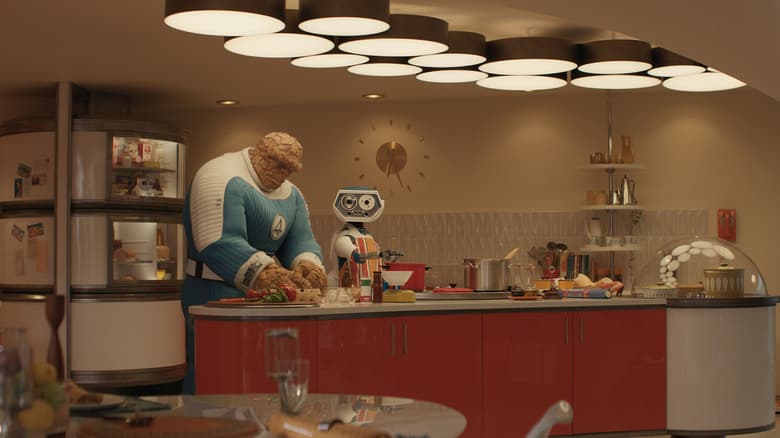To build The Fantastic Four’s futuristic version of Manhattan, Farahani looked to legendary architects like Eero Saarinen and Oscar Niemeyer, as well as sci-fi classics like 2001: A Space Odyssey. Original Fantastic Four comic artist Jack Kirby was also a major influence, as were futurist illustrators like John Berkey, Syd Mead, Charles Schridde, and Arthur Radebaugh. The goal, Farahani says, was to blend the sleek, sophisticated style of Saarinen or Niemeyer with the more whimsical, pie-in-the-sky fantasy of Disney’s Tomorrowland — complete with fanciful tech and talking robots.
Much of the film takes place within the Fantastic Four’s penthouse at the top of the Baxter Building, and Farahani and his team wanted to build a space that was part sci-fi spectacle, part snug family abode.
“We wanted it to feel like a home,” Farahani explains. “We wanted it to feel warm and like a place where our family lived — which is a little challenging because they’re essentially in a Manhattan penthouse. And Manhattan penthouses are beautiful and striking, but not necessarily the first thing that comes to mind when you think of a cozy warm home for a family.”
So, Farahani reimagined the family’s apartment as a “cabin within a penthouse,” with warm-toned wooden paneling, a cozy central fireplace, and a sunken conversation pit. The color palette also differentiates it from the rest of Earth-828 New York: The surrounding skyscrapers are mostly silvery whites and blues, but the inside of the Baxter Building is all gold, brass, and warm wood.
To make the home feel even more welcoming, Farahani emphasized mid-century materials like flagstone rocks and indoor plants. “You’re bringing all these natural elements inside to create this place that doesn’t feel sterile or cold,” he explains.
